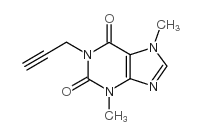| 结构式 | 名称/CAS号 | 全部文献 |
|---|---|---|
 |
1,3-二丙基-7-甲基黄嘌呤
CAS:31542-63-9 |
|
 |
3,7-二甲基-1-炔丙基黄嘌呤
CAS:14114-46-6 |